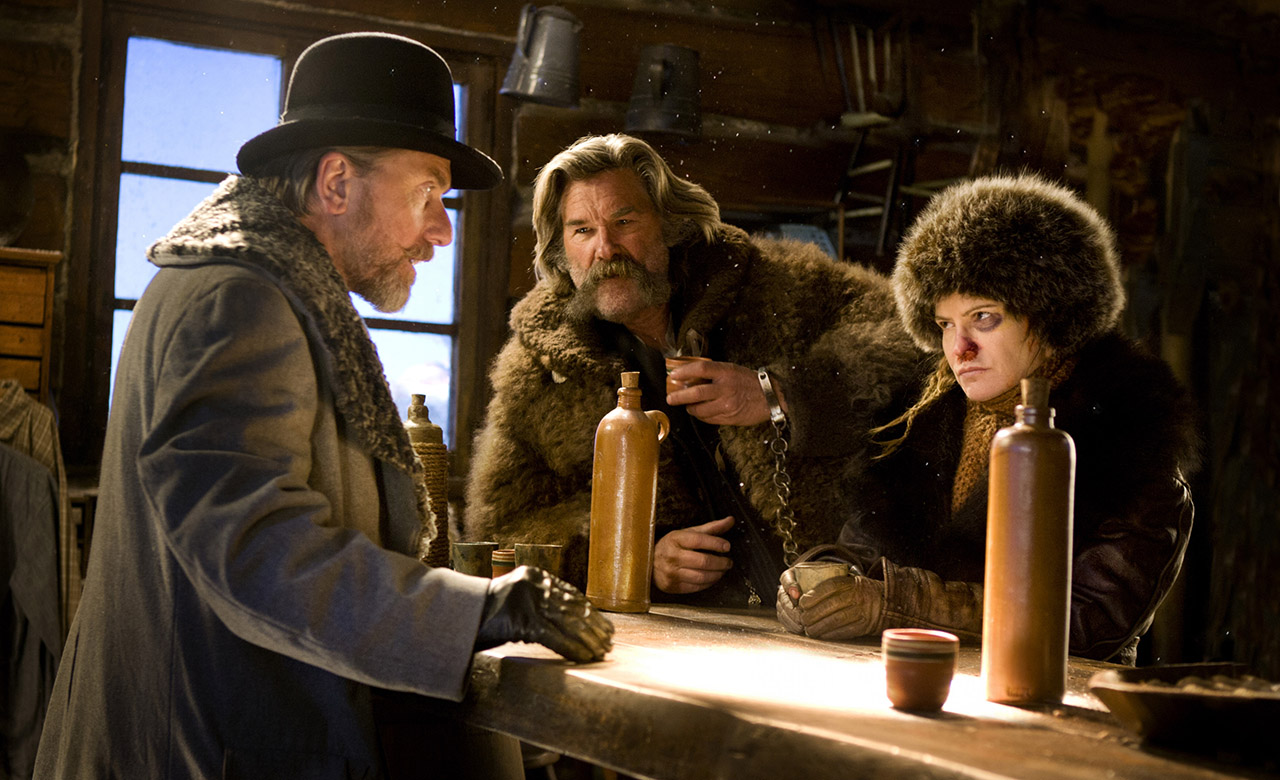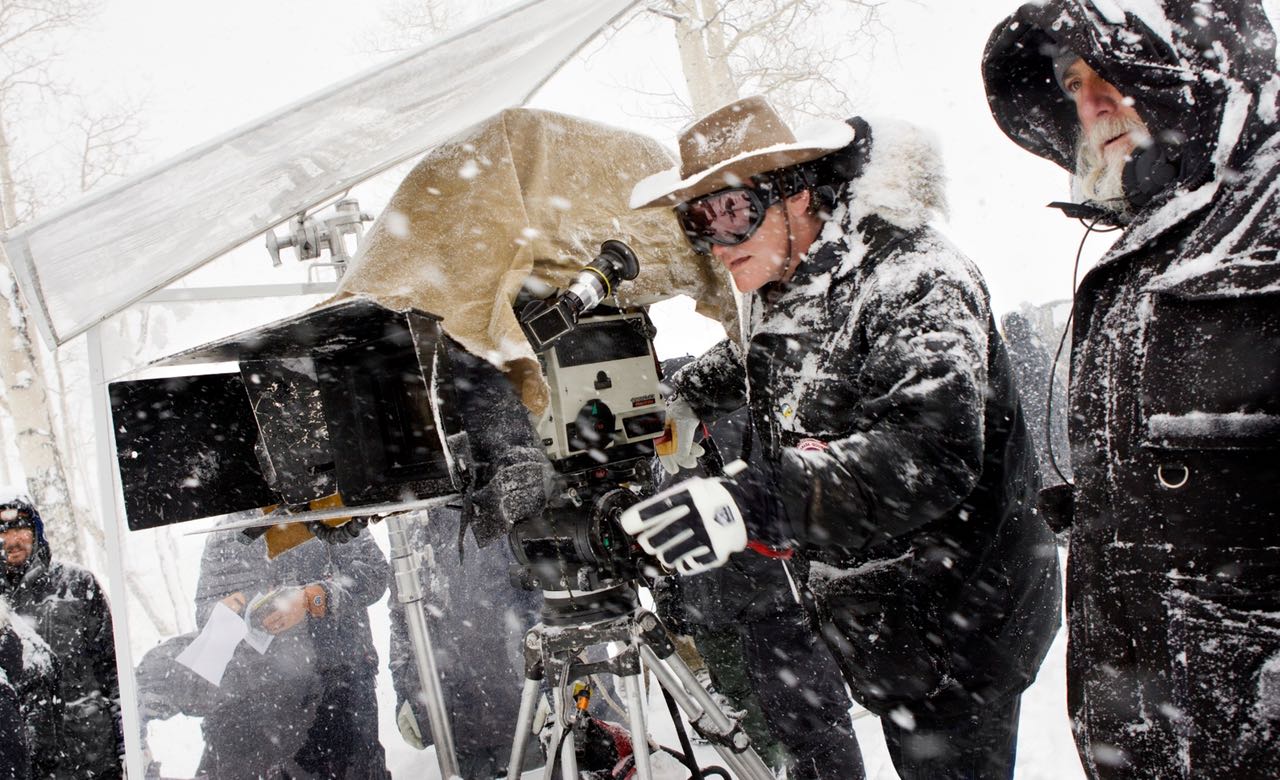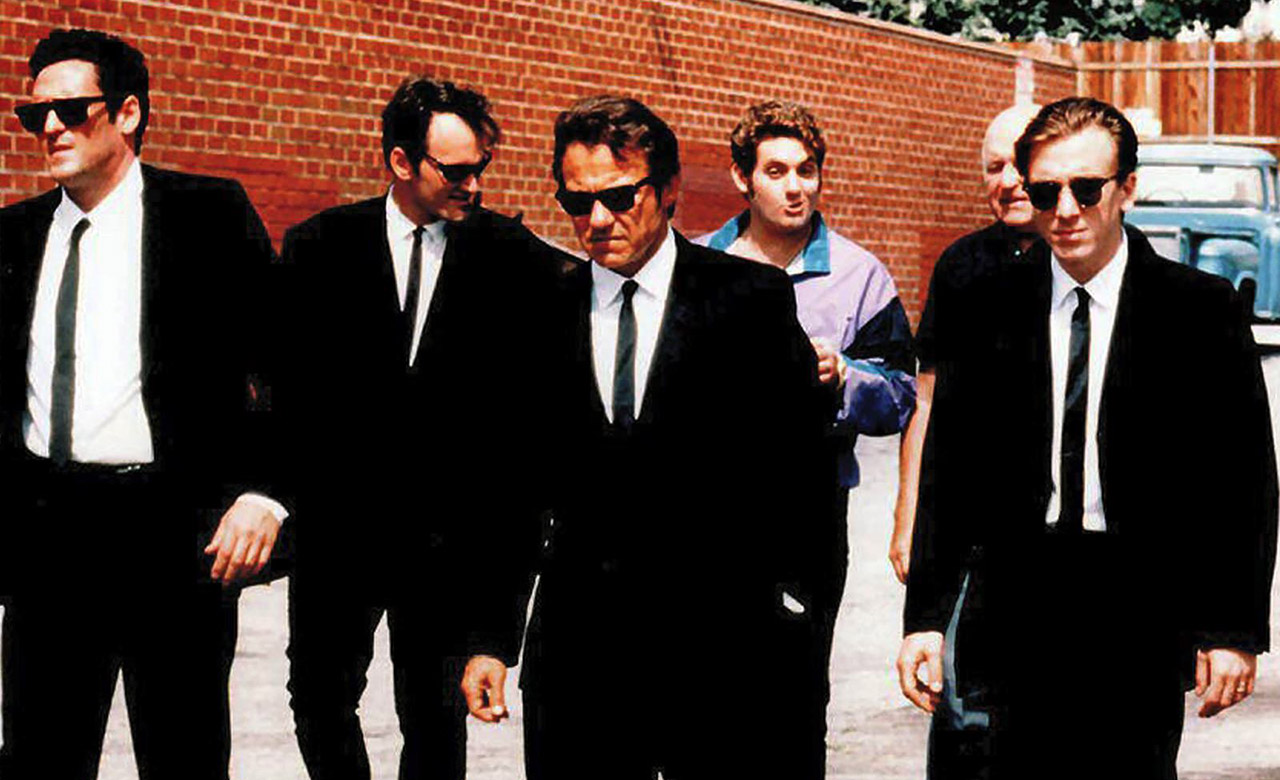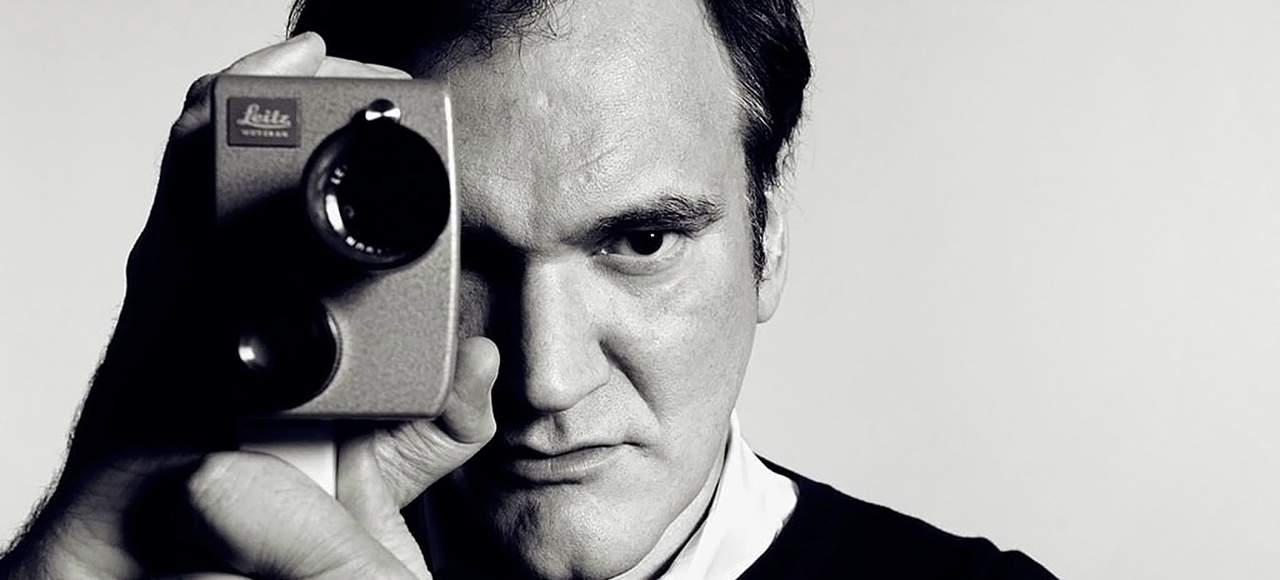Reviving the Best Bits of Cinema with Quentin Tarantino
The Hateful Eight director talks bringing back westerns, 70mm film and good old cinema-going.
There's no such thing as just another Quentin Tarantino film. Since he came to fame with Reservoir Dogs, the writer and director has continually toyed with dialogue-heavy, non-linear tales of crime and violence. And while there are stylistic elements that make a Tarantino film a Tarantino film, everything from Pulp Fiction to Death Proof has brought something different to the cinema.
Take The Hateful Eight, for example. In his latest and eighth movie, the filmmaker delves back into the western genre (as he did with 2012's Django Unchained), he re-teams with Samuel L. Jackson, Kurt Russell, Tim Roth, Michael Madsen and Walton Goggins, and riffs on the scenario of Reservoir Dogs. But he also does much more than that. In its story, The Hateful Eight follows the fallout that ensues when eight treacherous characters are forced into close quarters. But it's the film's presentation that's perhaps even more interesting. For one, it revives the format of Ultra Panavision 70 — last used in 1966. It also brings back a form of movie-going rarely encountered these days, screening with an overture and intermission. That's the experience Sydney and Melbourne audiences have been gifted with this last week, via some advance 70mm sessions prior to the feature's national digital release on Thursday, January 21.
Indeed, there's much to talk about when it comes to The Hateful Eight — and visiting Australia to promote the film, Tarantino did plenty. He spoke with Concrete Playground about what he has to offer one of his favourite genres, making The Hateful Eight an event, and watching audiences react to a different style of cinema. Among other topics, of course.
![]()

ON MAKING WESTERNS
"I've always been a big, big fan of the genre. And I think a lot of modern directors who have done westerns — like Walter Hill or somebody — before they actually got a chance to do a western, they kept flirting with the genre in modern terms to some degree or another. I mean, there's this whole aspect that Kill Bill: Vol 2 has a spaghetti western vibe, and I truly wanted Inglourious Basterds to almost have a spaghetti western feel — but with World War II iconography as opposed to western iconography.
So, with Django Unchained I got my first chance at it, and I just really love the genre. And I wasn't done with it. It's kind of that simple: I wasn't done with it. And I also think it's a really good fit for me. I think as far as characters are concerned and the way violence works in my movies, it works out very good for a western."
![]()

ON WHAT HE HAS TO OFFER THE GENRE
"I think, in today's world, if I'm going to be able to call myself a western director and put my movies on the shelf with somebody like Anthony Mann or Budd Boetticher or Peckinpah, then I think you need to do at least three westerns. I mean, if it was the '50s, it'd be eight — but at least three westerns.
And the fact that both movies deal with race in America at that time — two different times, but very close to each other — and also kind of do a vague mirror reflection on race in America today at the same time, I believe that's actually something I have to offer to the genre. That conversation is really something that hasn't been had that much in westerns — it's almost like that conversation has been avoided in westerns. And that's one of the things I think I have to offer to it."
![]()

ON HIS DECISION TO SHOOT IN 70MM
"One of the selfish reasons [I'm shooting in 70mm] is that I'm rather distressed at how digital projection has taken over to such a degree. I'm not really worried about shooting in digital because I'll always shoot in film — but I think something has been lost. I'm not saying that there's really anything wrong with digital projection, but I think something is lost if film projection is eradicated. And one of the benefits of shooting in 70mm is it's a little expensive. So, if a studio is going to pay to do that, they're going to at least make a token effort to make sure it gets shown in 70mm in certain cinemas. And that was a big calling card to do this.
But also, I did like the idea of making this movie an event — to actually have a visual look first. And also, [I liked] the idea that I was going to be filming in this weather, and filming the weather was a big part of what we were doing. We were going for a big look. As dense as the material is, as bleak as the material is, and as dialogue heavy as the film is, there is an emphasis on the visual aspect of it."
![]()

ON BRINGING BACK REAL CINEMA-GOING
"It's actually kind of funny because, watching the film with audiences, there is this thing about the overture: [people think] "what is this?" I always like to sit in the middle of the cinema so I can really watch the people who are sitting in front of me, and the heads and the shoulders down the line. And you see their shoulders kind of relax as that overture goes on, as they settle into their seat and settle into the experience that they're going to have.
And then there was this aspect — I think the first time I screened the film with a big audience — when the intermission happens, and it's like, "okay, what are we going to do?", and "okay, I guess I'm going to go take a pee or go have a smoke". But there is also that aspect of what you want to happen — they're talking about the movie. Apparently the toilets are abuzz, like "wow, did you just see what happened? I wonder what's going to happen next". You know, that kind of excitement about talking about the film.
But also, I do like intermissions if it seems appropriate, because I think that they can be used for dramatic purpose. And I think that's the case in The Hateful Eight — that it has a dramatic moment when it happens, and there's a kind of sigh."
![]()

ON THE HATEFUL EIGHT AS A WESTERN VERSION OF RESERVOIR DOGS
"Having made movies now for over twenty years, there was a full circle kind of aspect with [The Hateful Eight] of me almost coming back to the start. And maybe even closing the circle. And the next couple of movies, who knows what they could be, because the circle is kind of closed and it opens up another chapter for me. I don't even know what that chapter is — but that's actually kind of exciting.
But the idea of a western Reservoir Dogs was a little bit in my head as I was writing it, because I actually think that kind of pressure cooker situation could work really well in a western. There have been a few westerns that are really set-bound. One of my favourite westerns is Rio Bravo, and that really takes place between the saloon and the jailhouse — and I've always thought that Rio Bravo would be a really good play."
![]()
The Hateful Eight is currently screening in Australian cinemas in limited 70mm locations, with the film's digital release opening around the country on January 21. Read our review.





